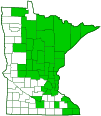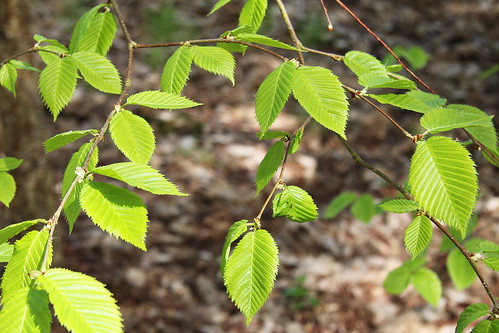yellow birch
(Betula alleghaniensis)
Conservation • Wetland • Description • Habitat • Ecology • Use • Distribution • Taxonomy
Description |
||
Yellow birch is a medium-sized, moderately fast-growing, deciduous tree. It rises on a single trunk from wide-spreading, lateral roots, each with one or two sinkers. The lateral roots are usually close to the surface, though in favorable conditions they may be up to 5′ deep. Occasionally, above-ground stilt roots are formed where a seedling became established on a log which subsequently rotted away. Above-ground roots are also present where a seedling became established on the mossy covering of a boulder. A mature tree can reach up to 90′ tall and 36″ or more in diameter at breast height, though in Minnesota mature trees are usually no more than 70′ tall and 24″ in diameter. It is moderately long-lived, commonly surviving 150 years, with older individuals 300 or more years old. In open areas it develops a short, thick trunk and large, widely spreading crown. In forested areas it develops a long, straight trunk free of branches for most of its length and a small, irregular, narrowly rounded crown. The branches are large, ascending, and drooping at the tips. The bark goes through four distinct transformations. Bark on saplings is thin, smooth, dark reddish-brown, and shiny, with pale, horizontal lenticels. Bark on young trees is tan, yellowish, or grayish. It is smooth with long, thin, dark, horizontal lenticels and horizontal, papery strips that are peeled, curled, and shredded at the edges. As the tree matures the bark becomes bronze, yellow, or silver gray (not white) and more peeling; the lenticels become thicker; and the peeling strips become more shredded. Bark on older trees is dark bronze to blackish and the lenticels are still clearly visible. It is separated into scaly, irregularly shaped plates that curl conspicuously at the edges. The curled plates eventually detach, leaving bark that is thick, gray, and broken into irregular, vertical plates and scales. This bark has no visible lenticels. At all stages of growth the inner bark has a mild wintergreen aroma and taste. First-year twigs are slender, greenish-brown, round in cross section, and somewhat zigzagged. They have raised, whitish lenticels, are sparsely hairy, and are covered with small resinous glands. Second-year twigs are hairless or almost hairless. They are light yellowish-brown or reddish-brown. Bark scraped from twigs has a mild wintergreen aroma and taste. Young twigs are not sticky or resinous. The leaf scars are small and half ellipse to crescent shaped. They have 3 bundle scars. The pith is pale, small, solid, and homogeneous (not diaphragmed). There is no terminal bud on long shoots. Lateral buds are egg-shaped and sharply pointed. On younger shoots they are hairy. They are covered with 3 reddish-brown, two-toned scales. The leaves are borne on two distinct kinds of shoots. Long shoots are produced at the tip of the twig. They are fast growing and have well-spaced nodes. Spur shoots emerge from the widely-spaced leaf axils along the long shoot. They are very slow growing and have very little growth between nodes. Two types of leaves are produced: early leaves, also called preformed leaves; and late leaves, also called neoformed leaves. Early leaves overwinter in the bud and are fully formed or almost fully formed before bud burst in the spring. They are the first leaves to mature in the spring. They are produced on spur shoots and at the base of long shoots. Neoformed leaves are all of the subsequent leaves produced on long shoots. They are formed in the season they emerge from new tissue growing at the tip of the shoot. The leaves are deciduous and alternate. They are borne in pairs on spur shoots and singly on long shoots. Each leaf is on a ¼″ to ⅝″ long, hairy leaf stalk (petiole). The petiole is pale green and is covered with short hairs. The leaf blade is narrowly egg-shaped to egg-shaped oblong, 2″ to 4″ long, and 1¼″ to 2½″ wide. It is rounded to wedge-shaped or somewhat heart-shaped at the base. It tapers to a point at the tip with distinctly concave sides along the tip. The upper surface is dark green and dull. On preformed leaves the upper surface is at first hairy, becoming hairless. On neoformed leaves the upper surface remains sparsely covered with short, stiff hairs. The lower surface of both leaf types is medium green and usually moderately hairy, especially along the veins and in the vein axils. The margins are doubly-toothed with sharp, forward pointing teeth. The teeth are coarse and somewhat irregular. There are 12 to 18 large teeth per side. There is a prominent midrib and 9 to 18 pairs of straight, parallel, lateral veins. Each lateral vein ends in a large tooth. In autumn the leaves turn bright yellow. Male and female flowers are borne on the same tree and on the same branch. Male catkins are preformed in the late summer the year before they shed their pollen. They droop singly or in clusters of 2 or 3 from leafless branchlets formed at the tips of current year long shoots. They are greenish, about 2⅜″ long, and 1 ⁄16″ to ⅛″ wide by late fall. They remain on the tree over the winter. The following spring they turn purplish-yellow and elongate, eventually becoming 2¾″ to 4″ long. They shed their pollen for 3 to 5 days in early May to early June. Female catkins are also preformed but remain in the protective bud over the winter. In the spring they appear singly at the end of very short, leafy, lateral branchlets on current-year twigs. At pollination time they are oblong, ¾″ to 1½″ long, and erect or ascending. The fruits are contained in mature seed catkins. Each seed catkin is cone-like, cylinder-shaped, and about 1¼″ long. The scales of the catkin are overlapping and minutely hairy, though this will not be visible without a hand lens. They persist through at least part of the winter. The fruit is a tiny, two-winged nutlet (samara). The wings of the samara are essentially hairless. The samara matures in mid-August to mid-September and is dispersed in the fall and early winter by wind and gravity. |
||
Height |
||
50′ to 75′ |
||
Record |
||
The champion yellow birch in Minnesota is on US Forest Service property near Pennington, in Itasca County. In 2012 it was measured at 76′ tall and 150″ in circumference (48″ in diameter), with a crown spread of 63′. |
||
Flower Color |
||
Green |
||
Similar Species |
||
Habitat |
||
Moist to wet. Streamsides. Moderately shade tolerant. |
||
Ecology |
||
Flowering |
||
Early May to early June |
||
Pests and Diseases |
||
|
||
Use |
||
|
||
Distribution |
||||
|
Sources |
|||
Nativity |
||||
Native |
||||
Occurrence |
||||
Common |
||||
Taxonomy |
|||
| Kingdom | Plantae (Plants) | ||
| Division | Tracheophyta (Vascular Plants) | ||
| Subdivision | Spermatophytina (Seed Plants) | ||
| Class | Magnoliopsida (Dicots) | ||
Order |
Fagales (Beeches, Oaks, Walnuts, and Allies) | ||
Family |
Betulaceae (Birch) | ||
| Subfamily | Betuloideae | ||
Genus |
Betula (birches) | ||
| Subgenus | Betulenta (wintergreen oil birches) | ||
| Section | Lentae | ||
Subordinate Taxa |
|||
Three varieties of yellow birch have been described. USDA Plants recognizes two varieties. Of these, only the nominate variety, var. alleghaniensis, occurs in Minnesota. Almost all other sources recognize no varieties. |
|||
Synonyms |
|||
Betula alleghaniensis Betula alleghaniensis var. fallax Betula alleghaniensis var. macrolepis Betula lutea Betula lutea var. fallax Betula lutea var. macrolepis |
|||
Common Names |
|||
swamp birch yellow birch |
|||
Glossary
Axil
The upper angle where a branch, stem, leaf stalk, or vein diverges.
Catkin
A slim, cylindrical, drooping cluster of many flowers. The flowers have no petals and are either male or female but not both.
Lenticel
A corky, round or stripe-like, usually raised, pore-like opening in bark that allows for gas exchange.
Node
The small swelling of the stem from which one or more leaves, branches, or buds originate.
Petiole
On plants: The stalk of a leaf blade or a compound leaf that attaches it to the stem. On ants and wasps: The constricted first one or two segments of the rear part of the body.
Samara
A dry fruit consisting of a seed attached to a papery wing; one seeded in Elms and Ashes, two-seeded in Maples.
Visitor Photos |
|||||
Share your photo of this plant. |
|||||
| This button not working for you? Simply email us at info@MinnesotaSeasons.com. Attach one or more photos and, if you like, a caption. |
|||||
Luciearl |
|||||
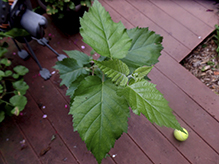 |
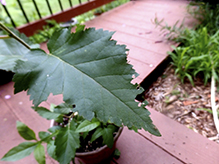 |
||||
spur-like twigs |
|||||
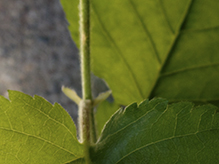 |
|||||
double-toothed leaf |
|||||
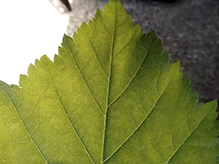 |
|||||
MinnesotaSeasons.com Photos |
|||||
Tree |
|||||
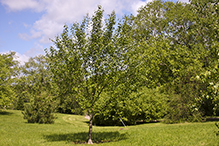 |
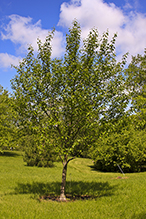 |
||||
Leaves |
|||||
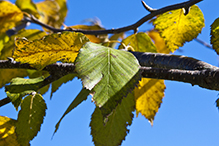 |
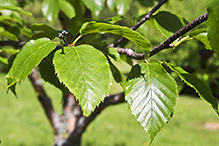 |
||||
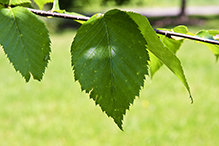 |
|||||
Seed Catkins |
|||||
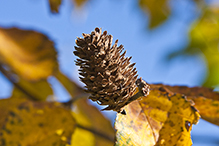 |
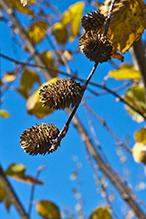 |
||||
Lenticels |
|||||
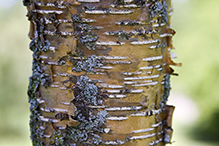 |
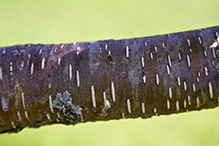 |
||||
Young Bark |
|||||
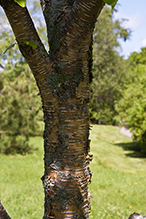 |
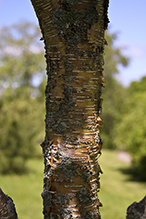 |
||||
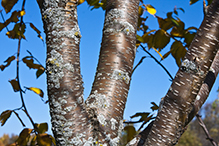 |
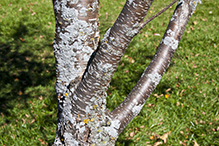 |
||||
Old Bark |
|||||
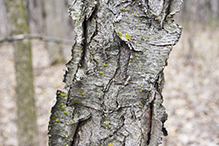 |
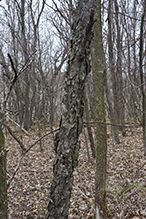 |
||||
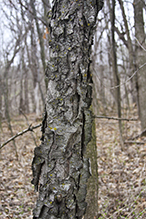 |
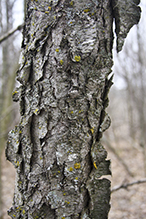 |
||||

Visitor Videos |
|||
Share your video of this plant. |
|||
| This button not working for you? Simply email us at info@MinnesotaSeasons.com. Attach a video, a YouTube link, or a cloud storage link. |
|||
Other Videos |
|||
| Yellow Birch Tree [Betula alleghaniensis] Identification BlackOwlOutdoors |
|||
About
Published on Jul 27, 2013 While out looking for a lost knife of Stony's, Krik spies a Yellow Birch tree along Lyman Run in the Pennsylvania Wilds. Unsure of the tree's species at first, Krik offers some tips on using a tree identification guide to ID while in the field. |
|||
| Yellow Birch Tree (Betula alleghaniensis) identification video wvoutdoorman |
|||
About
Published on Jul 12, 2013 Yellow Birch Tree (Betula alleghaniensis) identification video |
|||
| Yellow Birch: all you want to know about it Ralph St-Laurent |
|||
About
Uploaded on May 4, 2010 In the second course of college english, we had to create a video of a certain process, we have choosen to illustrate the embleem tree of Quebec. |
|||
| Wild About Tea - Yellow Birch PineMartyn |
|||
About
Published on Apr 23, 2012 Another video about wild edible plants, this one being the first in a series of short videos about teas and beverages made from wild edibles. |
|||

Created 1/2/2014
Last Updated:
